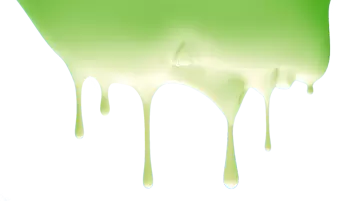Understand the different types of cameras that see in the dark - which one is best...
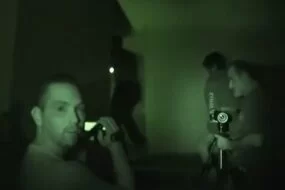 Night vision cameras can be broken into three types based upon the method of seeing in darkness: Thermal Imaging, Low-Light Intensifiers and Near Infrared Illumination. We will explore all three in this article.
Night vision cameras can be broken into three types based upon the method of seeing in darkness: Thermal Imaging, Low-Light Intensifiers and Near Infrared Illumination. We will explore all three in this article.
Most Digital Cameras: No True Night Vision Capability
Digital cameras that have a "night mode" for seeing in the dark typically lengthen the exposure time as a method of capturing as much light as possible. They rely on the flash unit of the camera to see in the dark. Using a digital camera in this fashion is not good for ghost hunting due to the lengthened exposure coupled with flash causing strange light bars and hazes, usually, orange in color. Plus, using the camera flash in darkness will illuminate dust, moisture, insects, lint and pollen in front of the lens, making them appear to be balls of light. Many ghost hunters mistake these light balls for ghosts. They are not. Night mode is only supposed to be used with a tripod (to make the camera completely stationary). Any ever-so-slight movement of the camera will produce the light bars or haze. Did we mention that the flash also disrupts the environment?
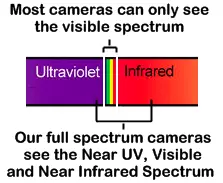 Digital Cameras and Camcorders with Night Vision: Limited Ability
Digital Cameras and Camcorders with Night Vision: Limited Ability
Cameras and camcorders are often used for ghost hunting that use Near Infrared Illumination. The amount of Near Infrared that reaches the camera's sensor (CMOS or CCD) can vary depending upon the camera and the filtering put in place. As a best scenario, older Sony camcorders with Nightshot had an Infrared-cut filter, like most cameras and video cameras. But what made the Sony models different was that the IR cut filter was designed to move out of the way when the Nightshot feature was activated, allowing Near Infrared to reach the camcorder's sensor. Also, a small Infrared light turned on when in the NightShot mode. (An IR cut filter blocks Near Infrared from reaching the camera's eye - the sensor. For normal photographs, blocking Infrared light is imperative if we want the camera or camcorder to see and record images in what we consider to be normal colors - the visible range of light.) Newer Sony camcorders with Nightshot do not work the same way as the old models from before August 1998. In fact, most units made later are not able to see outdoors when the Nightshot is used.
Commercial digital cameras that are advertised as having night vision capability must filter the lens in some way for the camera to still take photographs in normal colors. Either the filter is removed when the night vision is turned on (typically IR LEDs are mounted near or around the camera lens), or a small range of the Near Infrared spectrum is visible in order to see in the dark. Many of these cameras, typically, do not work well outdoors, if at all, like the Sony video camcorders. Often, they are confused by ghost hunters as being the same as "full spectrum." They are not.
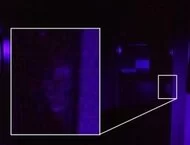 Full Spectrum / Multi-Spectrum Cameras: The Way to Go Ghost Hunting
Full Spectrum / Multi-Spectrum Cameras: The Way to Go Ghost Hunting
Ghost hunting cameras with night vision should have the filtering completely removed so as many frequencies of light, as possible, can be seen by the camera. These cameras are often called full spectrum cameras, multi-spectrum cameras or IR-Vis-UV cameras. They, too, rely upon Near Infrared Illumination but may also be used with full spectrum or Ultraviolet lighting. Full spectrum cameras have no filtering and can see the upper Near Ultraviolet, entire Visible spectrum, and a good chunk of the Near Infrared spectrum (roughly 500 nm). Some want to filter out the Visible spectrum and call the camera "full spectrum." It would be better to call a visible filtered camera a multi-spectrum camera or Infrared camera. Infrared cameras have the visible spectrum filtered out but may still be able to see the upper end of the Near Infrared. We offer a true Infrared Pass filter kit that fits all of our cameras so that the visible spectrum can be blocked while allowing the Infrared to pass through to the camera's sensor. This way, it is easy to experiment with our cameras and camcorders while ghost hunting. Switch back and forth between having a full spectrum or an Infrared camera in minutes. We should note that the ghost pictures taken with our ghost hunting cameras have all been recorded in full spectrum.
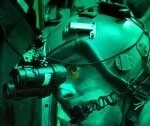 Low-Light Imaging Intensifiers
Low-Light Imaging Intensifiers
This type of technology is primarily used in night vision goggles and scopes. Simply put, they work by magnifying available light in order to see in the dark. Light intensifying night vision is not used in ghost investigation, typically. Although it may allow a person to see more in the dark, it will not reveal other light spectrum beyond the visible (what we normally see). Some ghost investigators may use this technology to see in the dark better, but with a full spectrum camera, you can see in the dark by watching the LCD screen!
New CCD chips with greater light sensitivity are being used in security cameras. They are known as on-chip gain multiplication cameras. They have high-sensitivity in low-light but do not handle bright light sources well in darkness. Also, they use a lot of power and are typically recommended for use in environments no higher than room temperature. They cost thousands of dollars as of this writing. When the cost comes down, it is likely they will be tested for ghost investigation.
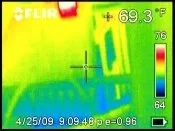 Thermal Imaging for Night Vision
Thermal Imaging for Night Vision
Thermal imaging cameras have become popular for ghost hunting thanks to television despite their high cost. They work by detecting the levels of Infrared energy radiating from objects (based on the subject's temperature). The warmer something is, the higher the amount of IR it will emit. Thermal imaging is "colorized" in order to better distinguish objects. The pictures of red, orange, purple, etc., are not actual representations of an object's radiation or "aura" (as some may think). If a ghost is detected, it would only leave a heat signature or shape in the environment, possibly. The only way a ghost could be "seen" by this type of night vision would be, in theory, for the immediate area around the ghost to be colder (a cold spot...hmm) or warmer than the environment around the specter.

